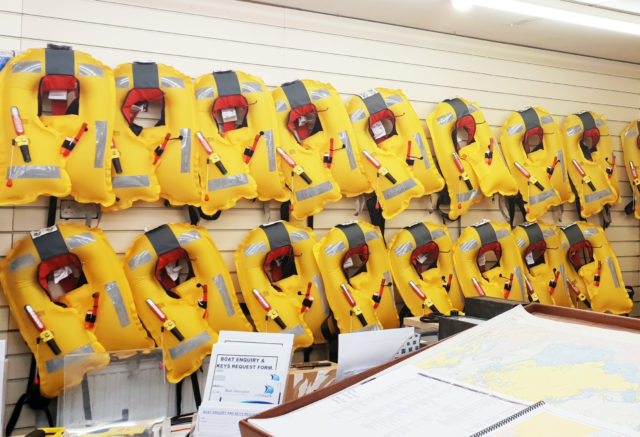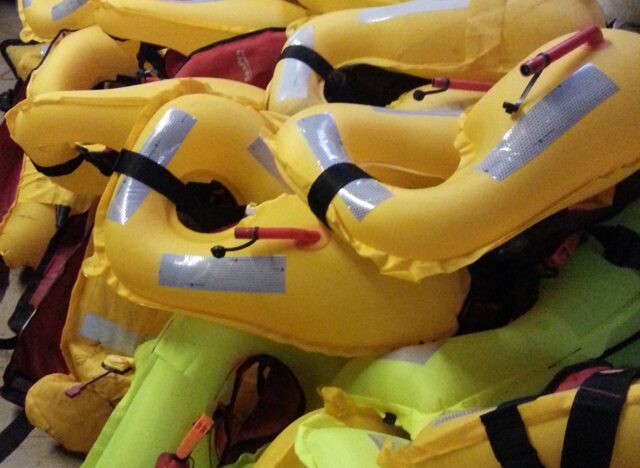Lifejacket Servicing
How often should I get my lifejacket serviced?
Here at Caley Marina we take your safety seriously. Nothing is more important than ensuring your safety equipment – and especially your lifejacket – is in tip-top condition. Lifejackets subject to infrequent use or for leisure purposes should be serviced by a trained technician at least once every two years. Lifejackets used more frequently or subject to heavier commercial use should be serviced at least once a year, with a visual examination prior to each use.

What’s included in the service?
When you drop your lifejacket off at Caley Marina for servicing, we examine it to ensure there are no parts missing, no rips or tears in the material, and all straps are intact. We then inflate the lifejacket to a set pressure and check there are no obvious leaks. A second pressure check ensures there are no slow leaks in the bladder. We test the firing mechanism and, if it’s an automatic lifejacket, we check the capsule or bobbin; if it’s expired, or close to expiry, we replace it.
We examine the gas canister and weigh it to ensure it contains the correct amount of gas, and there have been no leaks. The emergency light, if fitted, is checked and replaced if expired or close to expiry. The lifejacket is then carefully re-packed and a certificate issued with the service date.
How to choose the right lifejacket
Choosing the right lifejacket depends on your needs and use. Lifejackets have different levels of buoyancy measured in Newtons of lift – the more Newtons, the more lift. A lifejacket with a buoyancy Rating of 50N is considered to be a Buoyancy Aid and should be only be used by someone who can swim; in sheltered waters, or when help is at hand. A lifejacket with a Buoyancy Rating of 100N is likely to be a foam filled version and again is designed to be used over light clothing and in sheltered water.
A Buoyancy Rating of 150N to 190N is considered the minimum level for sailing in sheltered to offshore water while wearing foul weather clothing. In offshore water in extreme weather conditions, and when wearing special protective clothing or carrying heavy equipment, a minimum of 275N to 290N is recommended.

How to wear a lifejacket
All lifejackets have a self-righting capability designed to float the wearer face up in the water. Remember, however, that air trapped in foul weather clothing can affect this ability. A lifejacket should only be worn over all other clothing, never under a jacket.
Lifejacket inflation systems
You may purchase a manual inflation only type of lifejacket, which means you have to physically pull on the inflation cord to fire the gas cylinder. This works well unless you are unconscious in the water or injured, when there is no alternative way of inflating it.
Most people opt for an automatic inflation system. There are three main types. United Moulders and Halkey Roberts both rely on a small capsule coming in contact with water, which causes it to fire and inflate the lifejacket. The third version is made by a company called Hammar. This firing unit relies on water pressure to inflate the lifejacket. Whichever type you choose, make sure you follow the above service recommendations.
